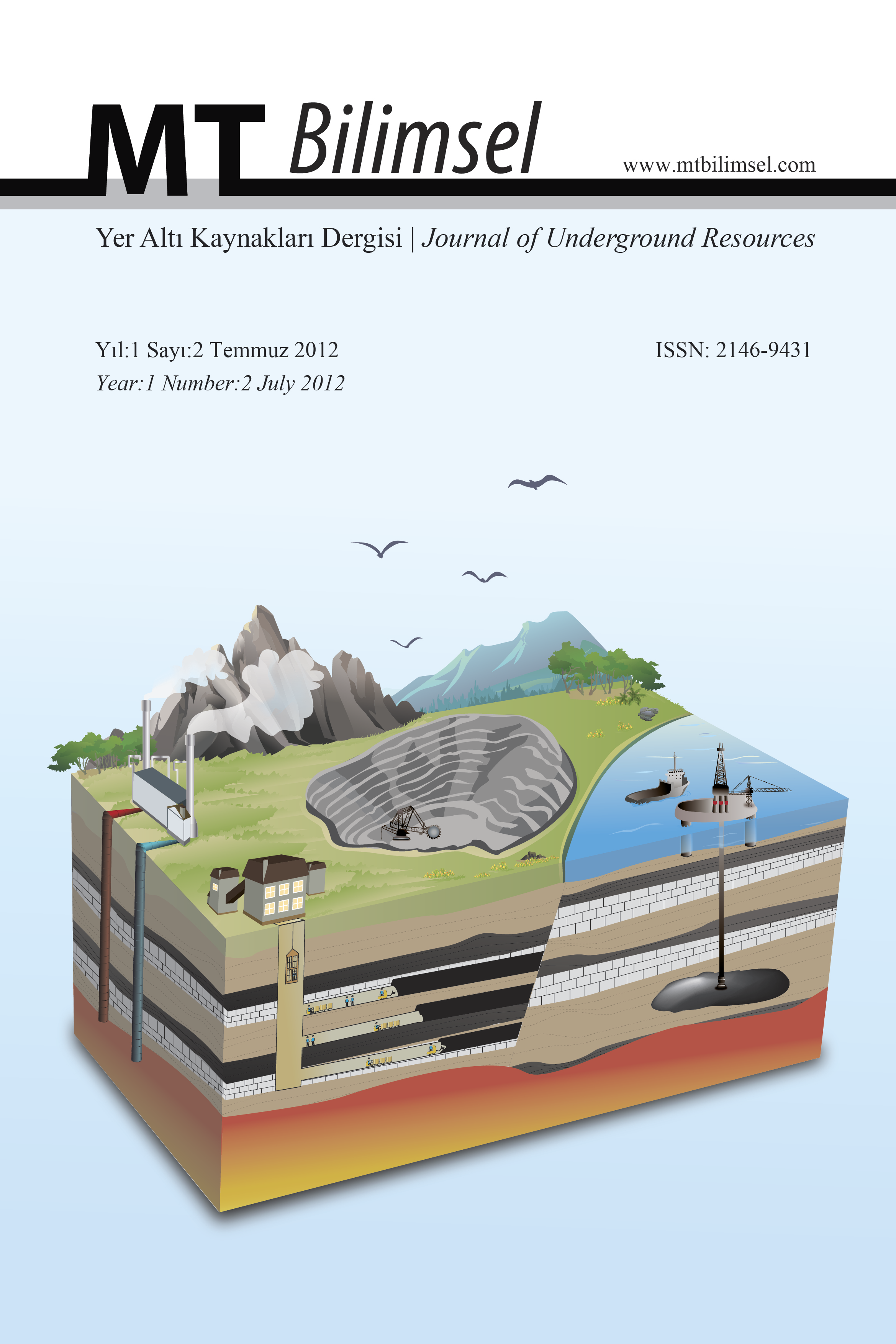Kalkopiritin Asitli Çözeltilerdeki Elektrokimyasal Davranışı
Bakır üretimi, genellikle sülfürlü cevherlerinden elde edilen flotasyon konsantrelerinin izabe edilmesiyle yapılmaktadır. Son yıllarda artan çevresel kısıtlamalar ve cevher oluşumundaki empüriteler nedeniyle pirometalurjik yöntemler, yerlerini hidrometalurjik işlemlere bırakmaktadır. Bakır hidrometalurjisi 1970’li yıllardan beri araştırılmaktadır. Ancak teknik başarısına karşın ekonomik olarak uygun olmaması nedeniyle uzun süre uygulama alanı bulamamıştır. Solvent ekstraksiyon ve elektroliz proseslerinin entegre edilmesi, bu alana olan ilginin 1990’lı yıllarda yeniden artmasına neden olmuştur. Bu nedenle kompleks mineral olarak nitelendirilen kalkopiritin, atmosferik basınç altında asitli çözeltilerdeki reaksiyon mekanizması, mineral yüzeyinde oluşan bileşikler ve bunların çözünme hızına etkileri detaylı bir şekilde araştırılmıştır. Bu çalışmada farklı gözlemlerin ve sonuçların ortaya atıldığı bu çalışmaların bir derlemesi sunulmaktadır. Kalkopirit liçinde sıklıkla gözlemlenen ve belirtilen mekanizmalara göre, çözelti potansiyeli, sıcaklık ve Fe3+/Fe2+ derişimine bağlı olarak mineral yüzeyinde metal-eksikli sülfürler oluşmaktadır. Bu bileşiklerin oluşumu iyon difüzyonunu engelleyerek çözünme işlemini yavaşlatmaktadır. Bu durumu ortadan kaldırmak için uygulanan çeşitli yöntemlerden de bahsedilmektedir
Anahtar Kelimeler:
Atmosferik liç, kalkopirit, metal-eksikli sülfürler, yüzey pasivasyonu
Electrochemical Behavior of Chalcopyrite In Acidic Solutions
The copper production usually involves subjecting the sulfudic flotation concentrates to smelting. Recently due to increase in environmental limitations and impurities in ore formation, hydrometallurgical routes are preffered as an alternative to pyrometallurgical processes. The copper hydrometallurgical investigations have been made since 1970’s. Despite reasonable technical success, the process was not proved economically. Since then the integration of solvent extraction and electrowinning technology has led to renewed interest in this area in 1990’s. Thus, the detail investigations have been conducted on the complex chalcopyrite ore under atmospheric pressure to elucidate the reaction mechanism, formation of intermediate sulfides and their effects on leach kinetics. In this study, the compilation of the studies including various observations and outcomes, are presented. The general conclusion is that the electrode potential, temperature and concentration ratio of Fe3+/Fe2+ are responsible for the formation of metaldeficient sulfides on mineral surface. These species hinder the dissolution rate by preventing the ion diffusion through the mineral surface. The methods applied to overcome this drawback are also discussed in the present study
- ISSN: 2146-9431
- Yayın Aralığı: Yılda 2 Sayı
- Başlangıç: 2012
- Yayıncı: Mayeb Basın Yayın İnsan Kaynakları Ltd. Şti.
Sayıdaki Diğer Makaleler
Simav Depreminin Yüksek Hızlı Tren Tünellerine Etkisi
Elif Apaydın POŞLUK, Evren POŞLUK
Madencilik Faaliyetlerinde Bazı Karar Verme Problemlerinin Çözümünde TOPSIS Yönteminin Uygulanması
Kalkopiritin Asitli Çözeltilerdeki Elektrokimyasal Davranışı
